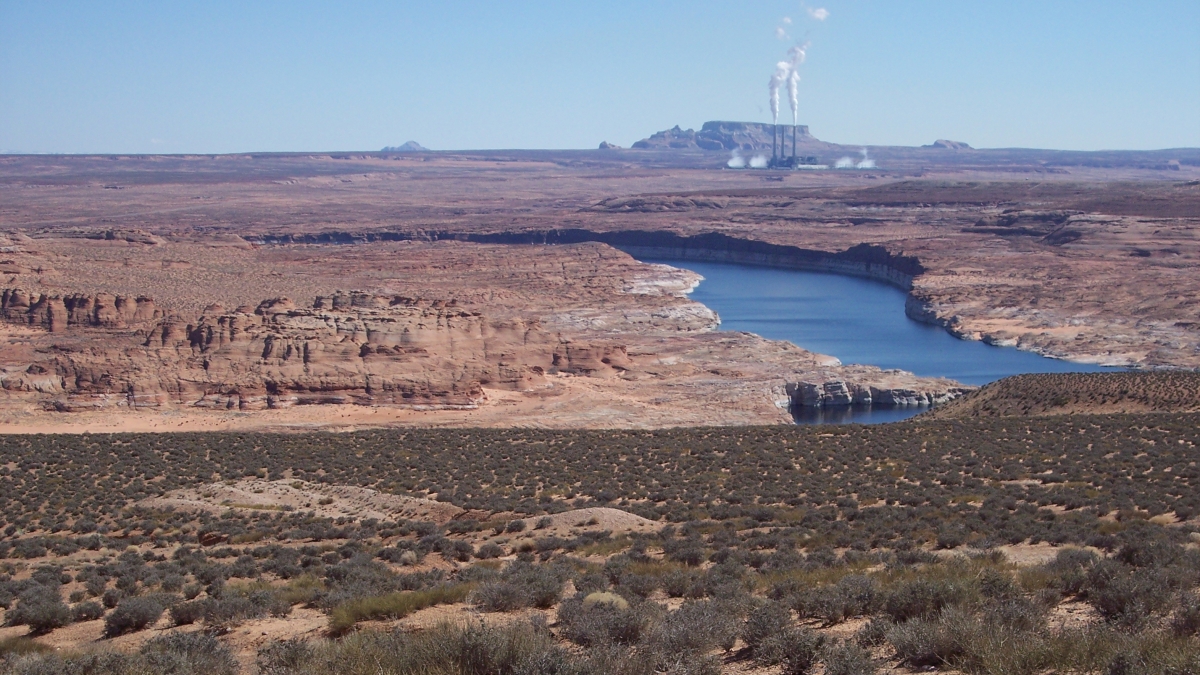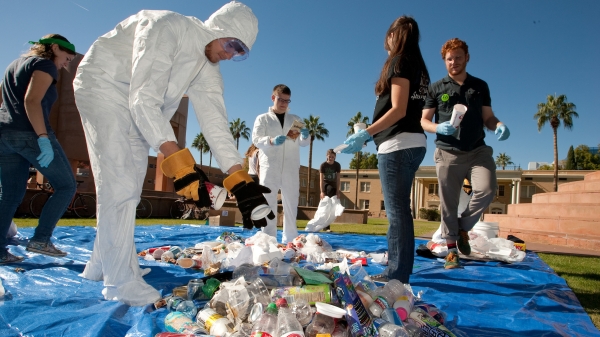How will the Navajo walk away from coal?
ASU receives grant from Department of Commerce to study the question, work on economically and culturally smart solutions

Last week the federal government awarded nearly $420,000 to the Navajo and Hopi tribes to prepare for the closure of a coal-fired power plant and mine.
The Navajo Generating Station in Page, Arizona, and the Kayenta Mine that supplies it with coal will shut down in 2019 unless a new owner for the power plant is found.
The U.S. Department of Commerce announced financial support Wednesday for Navajo and Hopi communities dealing with the declining use of coal. About $250,000 goes to Arizona State University for projects related to the power plant and mine closures.
Martin Pasqualetti, a professor in the School of Geographical Sciences and Urban Planning at ASU, is working on possible solutions.
“Nothing happens if the Navajo don’t want it to happen,” said Pasqualetti, an expert on renewable energy, energy policy and human factors in science and technology. “That’s the first step.”
The Navajo will lose an estimated 800 jobs: 500 at the power plant and 300 to 350 at the mine. They’re looking at how to replace the jobs and the revenues that the power plant and mine provided.
The university will work on what the implications are of closing that plant, and what the opportunities might be for doing something new. How do you come up with new jobs? What are economic development options?
“$200,000 doesn’t get you very far, but we’ll do something,” Pasqualetti said.
Pasqualetti wrote a paper last year about the cultural challenges of implementing renewable energy on the reservation.
The plant is adjacent to the LeChee Chapter of the Navajo Nation. They will be among tribal members who have the final say in what comes after the plant shutters.
“That is another aspect: getting the chapter interested in working with us,” he said. “It’s always a bit complicated; it doesn’t matter what entity you’re dealing with — there are always complications you don’t anticipate, and the Navajo nation is no exception. Even if we work with LeChee, there may have to be other characteristics we have to deal with.”
We spoke with Pasqualetti about the issues facing the area after the plant closes, the opportunities available, and how a giant art and energy project might take advantage of the area’s tourism draw.
Question: When the plant closes, what will the Navajo Nation have to work with?
Answer: You have a 2,000-acre site, you’ve got 800 miles of transmission lines that all emanate from there, you’ve got a water supply, and you’ve got workers, infrastructure, roads — everything is there. You don’t have to deal with any of that. To put in something else, you don’t have to find a new site, a new transmission corridor — it’s a very, very valuable site if you want to generate electricity, and that’s what they want to do.
Another aspect of this is renewable energy. Is that the best option? There’s been discussion of converting it to a gas plant. That doesn’t seem to be going anywhere, for a lot of reasons. It’s expensive to convert it. The closest nearby gas line is a line that goes across the Little Colorado at Cameron. I would imagine that’s about 80 miles in a straight line to the power plant. I can’t imagine that makes any economic sense.
Q: How could the issue of implementing renewable energy from a cultural standpoint be addressed?
A: There’s a group called the Land Art Generator Initiative (LAGI). It’s been in existence about 10 years. Every two years they have a competition to design the most beautiful renewable energy (facilities) you can design for a particular area. They did one in Dubai in the desert. They did one in New York, in Fresh Kills on Staten Island. They did one in Copenhagen and they did one in Santa Monica last year. ... The plant is closing, and 2020 is the next competition. If we can marry those two, the idea being that we can design a tourist attraction with renewables and make something strikingly beautiful. If you look up up LAGI ... not only is each one visually attractive, but they generate electricity. Some of them desalt water.
Getting back to your question, what about renewable energy on Navajo? You could put renewable energy there, but does it produce a lot of jobs? No. Jobs during construction, yes, but jobs during operation, no. ... You can operate that with a dozen to two people. Not much goes wrong. If you can combine these big arrays of photovoltaics with an enhancement there that is visually attractive and alluring and it’s the result of an international design competition ... that’s a possibility. There’s a lot of moving parts. You’ve got to get the Navajo to say yes. ... If you’ve got 3.5 million people going to Lake Powell, a million go to the dam, they go to Horseshoe Bend, they float down and fish, they go to Antelope Canyon — every time I’ve been up there it’s bus after bus after bus. Then you put this beautiful installation next to it that happens to be renewable and fit it in with the landscape and tell the Navajo story ... The Tate Museum in London is a great example. It’s a world-class museum in an old power plant.
Q: How will Page be helped to transition?
A: I read an article in the local Page paper about a month ago and they said they’ll be fine without the power plant ... you still have millions of people going there. It’s astounding the number of tour buses you see up there. ... It’s still the shortest way from Zion and Bryce to the Grand Canyon, so along the way they stop and see the dam, Antelope Canyon and Horseshoe Bend.
Top photo: Colorado River with the Page, Arizona, city area on the right and Navajo generating station in the background. Photo by Adbar/Courtesy of Wikimedia Commons
More Environment and sustainability

A run on fossil fuels: ASU professor says climate legislation could have unintended consequences
As concerns about climate change grow, policymakers are increasingly voicing support for stricter fossil fuel legislation. Their discussions and proposals raise questions about the future of the oil…

Confusion complicates US recycling efforts
In most major cities and buildings, recycling bins can often be found alongside trash bins in an effort to encourage recycling. But is it working? According to the U.S. Environmental Protection…

ASU empowers students to build a thriving global future
At Arizona State University, leadership has made tremendous efforts to create programs and initiatives aimed at supporting a healthy planet and thriving future for all life — and now, more than ever…